I’d heard other people refer to the Rollei A110 as the best 110 camera ever produced, but I was expecting a certain amount of that to be hyperbole. Then I got hold of one. It isn’t a slam dunk, but now I understand.
First, a bit of history. Way back when, Rollei made a camera called the 16s. It was regarded as the acme of sub-miniature cameras. It had:
- a shutter that went from 1/30 to 1/500
- automatic programmed exposure via a selenium cell
- a fast (f/2.8) Zeiss Tessar focusing lens that was able to take telephoto and wide-angle ‘Mutar’ add-on lenses
- a 12×17 mm image size
Rollei gave this absolute gem up to produce a camera based on a consumer 16mm cartridge that lacked a pressure plate and only gained 1 mm in image height. They must have seemed to be throwing the baby out with the bathwater.
Be aware that the Rollei A110 camera they switched over to is superb.
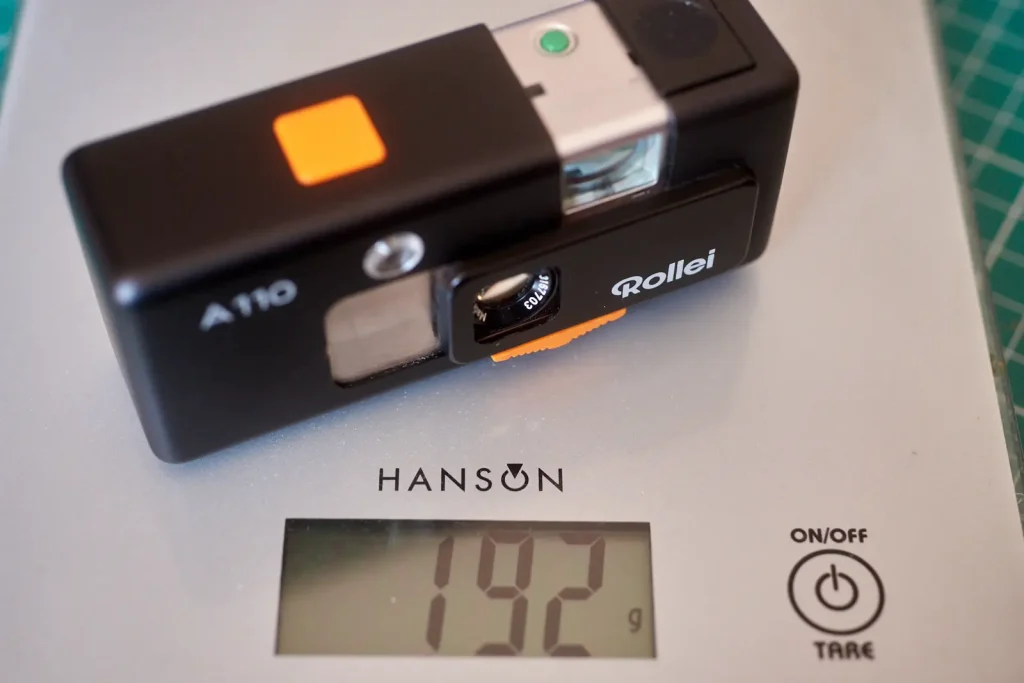
Rollei A110
Rollei showed a working A110 at Photokina in 1974. It seems to have caused a degree of excitement, but problems in production meant it only went on sale late the next year.
The standard Rollei A110 came in an anodized black finish. It was fully automatic with manual focus and a Zeiss licenced Rollei Tessar lens. The tiny case enclosed 260 separate parts.
This is a surprisingly heavy camera. Your first impression of how small it is collides with a second impression as you pick it up and feel the heft. High quality plastics are used in addition to metal, but only where they make good sense.
Rollei A110 Exposure system
The actual exposure system in the Rollei A110 is complex, maybe unnecessarily so. It operates with a fast silicon sensor, originally powered by a PX27 mercury 5.6v battery.
The shutter is in two parts. One is a combined shutter/diaphragm which opens up from a small aperture and heads towards fully open. Once the silicon sensor detects that enough light will have passed into the lens, the second part of the shutter closes. For short exposures the first shutter will only be at a small aperture when the second shutter closes, while for longer ones it will have opened entirely. From the rear you can see the crescent blades of the second part of the shutter being reset during the push-pull film advance to reveal the combined aperture/shutter in front of it. I’m told it is all done with magnets. The key thing is, it seems to work (at least, until it doesn’t).
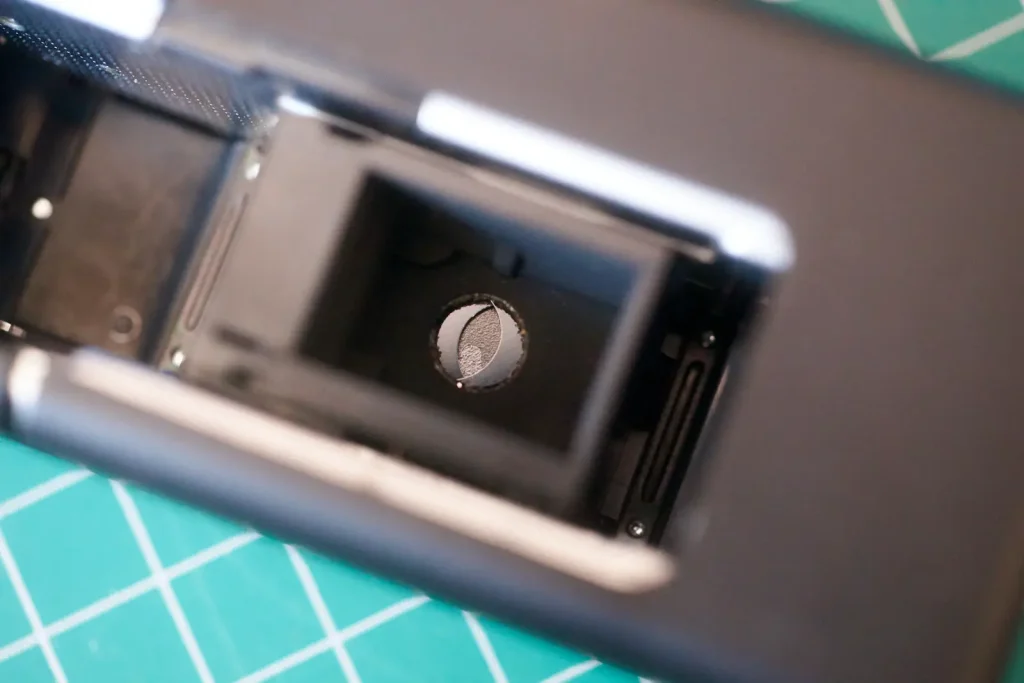
That silicon sensor allows the camera to react to changes in light during an exposure. It can even react to close the second shutter to cut off a flash exposure. This is impressive even if the flash in question is a flashcube bulb. The Rollei A110 only works with electrically fired flash cubes which fit into a little adapter that plugs into the left-hand end of the camera. There are no electronic flash options.
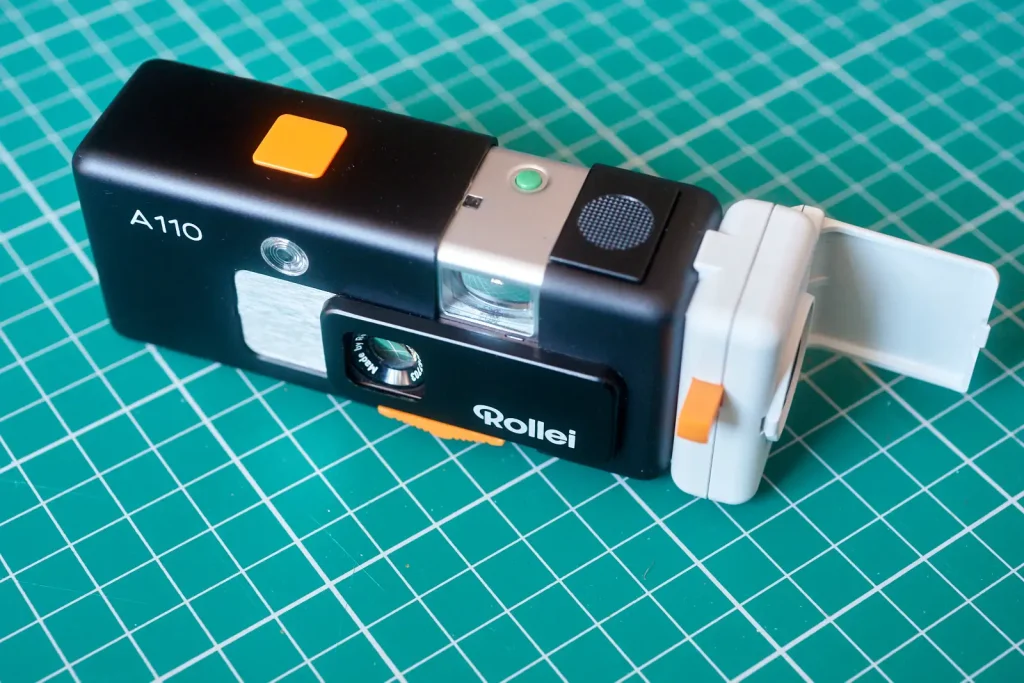
The Rollei A110 seems to be able to deal with the slightly higher voltage from a ‘replacement’ S27PX silver oxide 6v battery. The battery sits in a little plastic cradle that fits into the top left of the camera, next to the viewfinder.
Because its design predated high speed 110 film, the original A110 has no sensor in the chamber to detect film speed. This is not a huge disadvantage these days as the only 110 film available is low speed. In the comments at the end of this article, Stephen Woolford reports that later model A110 cameras do have a sensor for high speed film.
Inserting film
The Rollei A110 doesn’t have a conventional catch for the back – instead the door is held closed by the sliding section of the case. In normal operation the case does not travel enough to let the back open. A tricky little double button under the camera, allows the case to expand just a little more to open the door. I say tricky, but not so tricky that you won’t be able to open it – you just won’t ever open the back by accident.
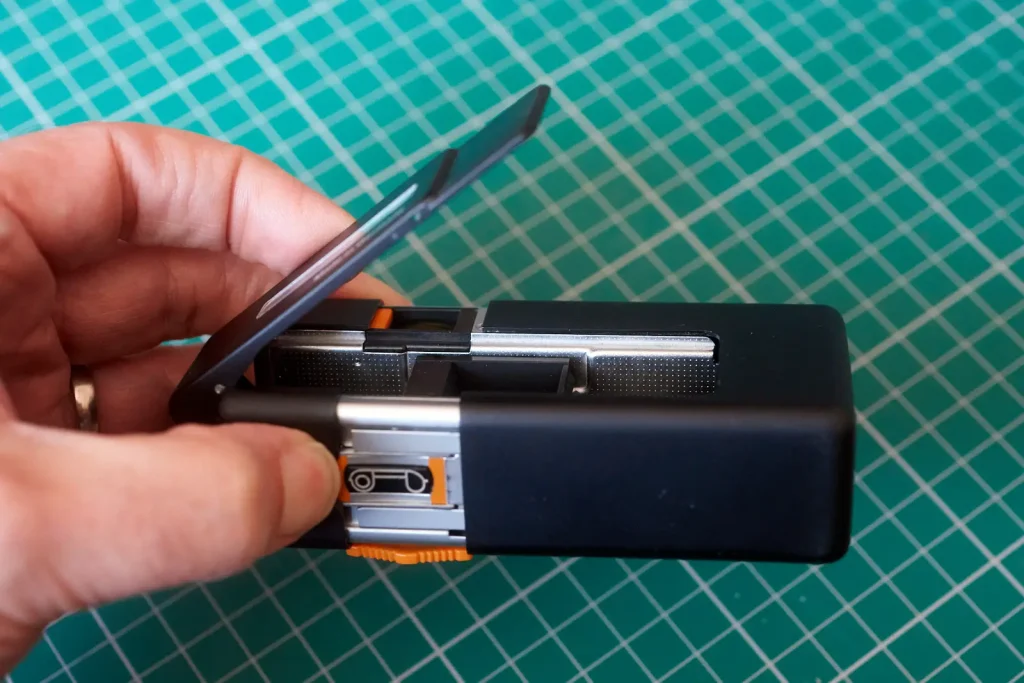
Rollei A110 Film advance
Film advance and shutter cocking are executed by closing the case and pulling it open again. As with the Rollei 16, changing your mind and closing the camera up again won’t cost you a shot. This is an issue with the early sub-min Minox and Minolta 16 cameras that use a push-pull film advance.
Focusing and Viewfinder
Focusing the Rollei A110 is by a small plastic slider just below the lens. Focus goes from 1 m to infinity. Chosen focus is indicated by a green bar against a mix of numerals and pictograms across the top of the viewfinder. The viewfinder shows bright lines (no parallax marks, but the viewfinder is very close to the lens). You also get a flash from a green LED top right of the viewfinder on taking a picture to confirm that exposure was OK.
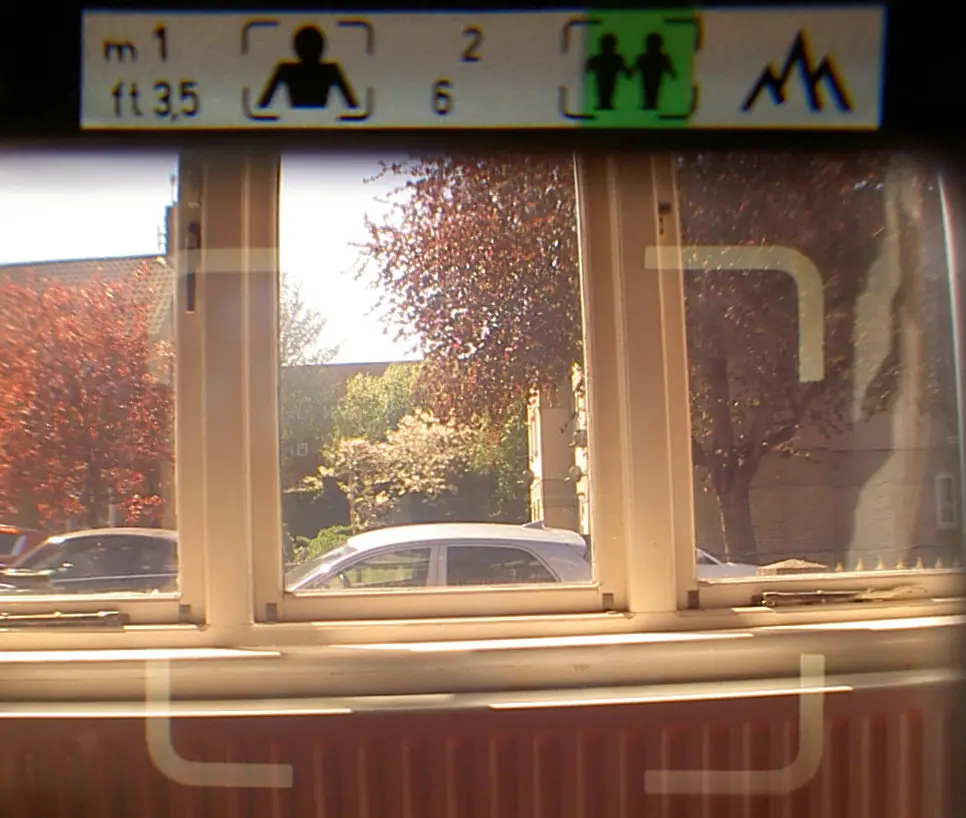
Other
The only other controls on the Rollei A110 are the battery check button and the shutter release. When pressed, the battery check button flashes the green LED in the viewfinder (also visible from the top of the camera) to show the battery has enough juice. The shutter release has minimal travel and locks when the camera is closed.
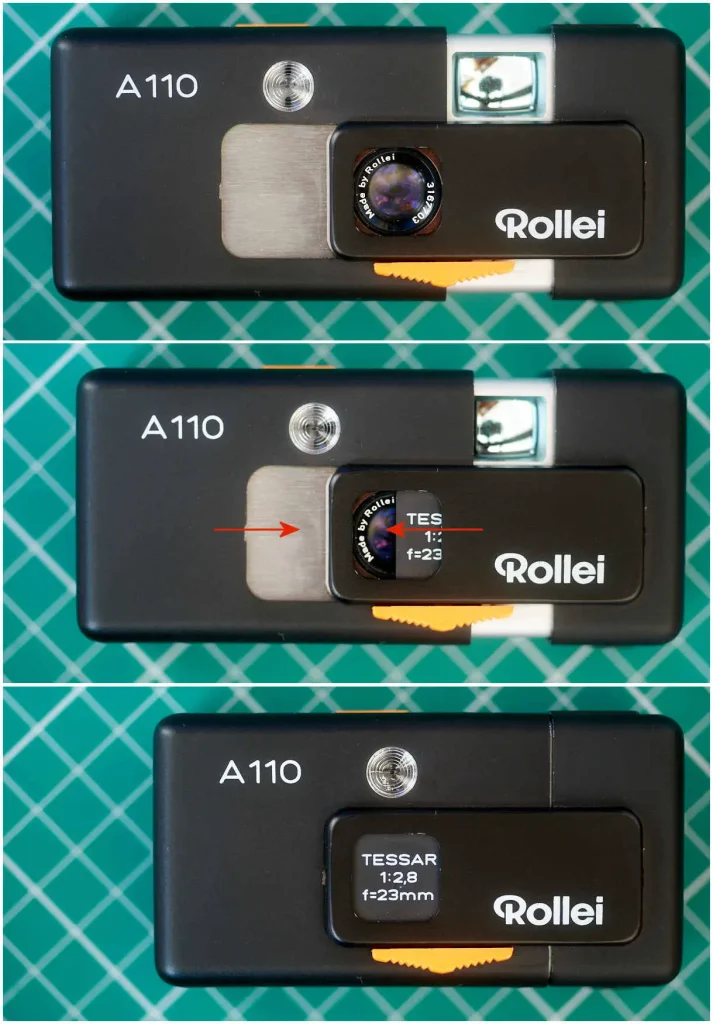
Is that all?
That is it. The only other thing you get aside from those few meagre controls is a tripod mount and the feeling that your shots really matter because you are using a such a high quality instrument.
It really does feel that good. But it needed to, because the price of the Rollei A110 on release was $300/£120. That was a lot of money for a 110 camera in the mid 70s.
E110 variant

In 1976, Rollei introduced a simplified model – the E110. The finish was brushed aluminium. It had the same excellent lens and focusing system, with the same indicators in the viewfinder. It used a CdS photocell and only had shutter speeds up to 1/250. The other part of the simplification was to give it three manually set apertures, which the single-part electronic shutter would then set an appropriate speed for.
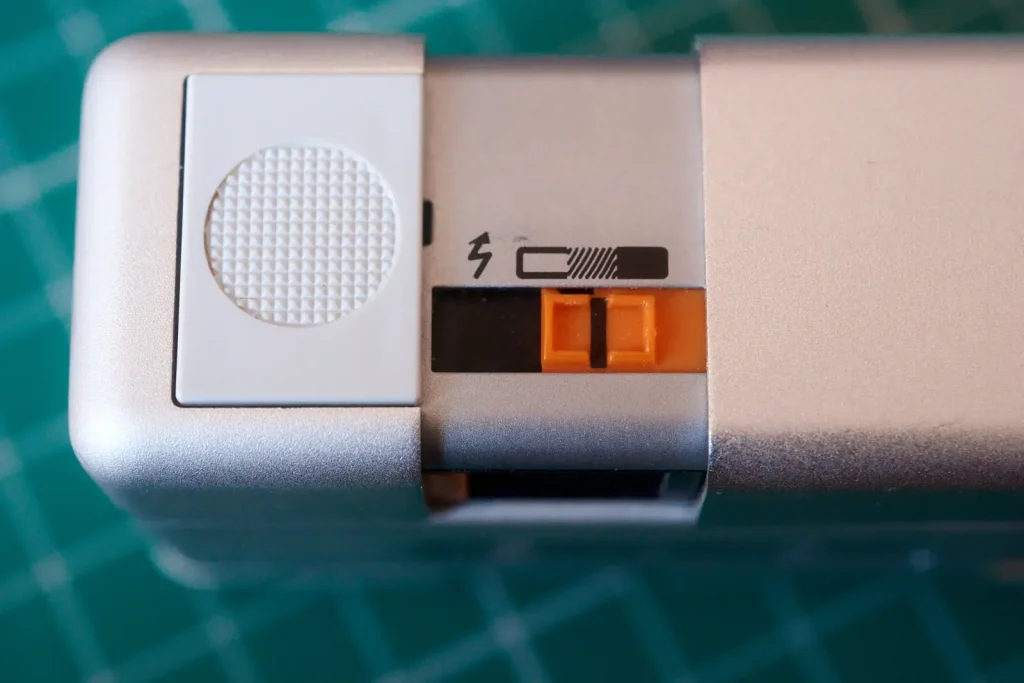
The three manually set apertures effectively make the E110 an aperture priority camera (although with just 3 apertures), which might appeal to a lot of photographers. Apertures are not marked with F-numbers. Instead, you get a light block (f/16), a block with dark and light diagonal stripes (f/5.6) and a dark block (f/2.8). There is a fourth setting for flash (flashcube) where the aperture adjusts with focus distance (a-la flashmatic).
The E110 can sense high speed films (although no high speed films are available at time of writing). Reports say that the E110 it doesn’t deal with an S27PX battery as well as the Rollei A110. The extra 0.5 volt of the silver oxide battery may cause overexposure. Some people report overexposure of multiple stops. If this does occur, you may be able to get the right exposure by fooling the camera into thinking that it has a high-speed film loaded. I was planning on trying this mild kludge, but the E110 I got hold of was not functioning (see the first bullet of issues).
I wouldn’t get too excited about aperture priority in this camera. In practice a 110 camera with a 23mm lens is never going to give you much differential focus and being able to set the camera to a large or small aperture may mean more shots that are either overexposed at f/2.8 and 1/250, or use an unsuitably slow shutter speed with an f/16 aperture.
Rollei 110 issues
All those parts. A lot of them must be tiny and the interaction between them is probably very complex.
- There are lots of reports of reliability issues. Country of manufacture (Germany or Singapore) doesn’t appear to be the issue. If you get an Rollei A110 or an E110, make sure that the camera will meter with currently available batteries and that the shutter opens when the shutter release is pressed (hearing a click is not enough). The shutter can be checked without a film in the camera. You should be able to see the shutter open against the light, through the window in the rear door. The A110 should choose an odd-shaped diaphragm when pointed at a bright light source.
- The apertures in the Rollei 110 cameras are a long way from circular (other than wide open). At f/5.6 the aperture resembles a cross; by f/16 it is a small slightly rounded rectangle. However, this is unlikely to detract in practical use.
- If you get hold of a working E110 the exposure might be off with the higher voltage battery. You might have to regard your first film as a sacrifice. You may be able to alter the speed setting tabs on the 110 cartridge, or you might need to adjust processing times.
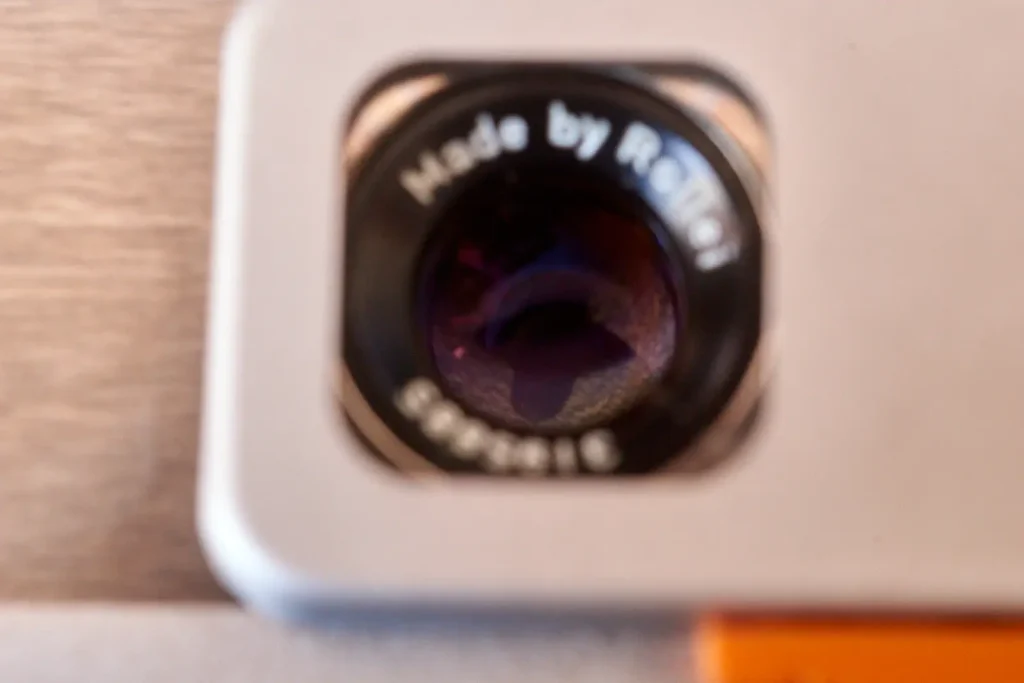
Rollei 110 pictures
A selection if pictures taken with the Rollei A110:
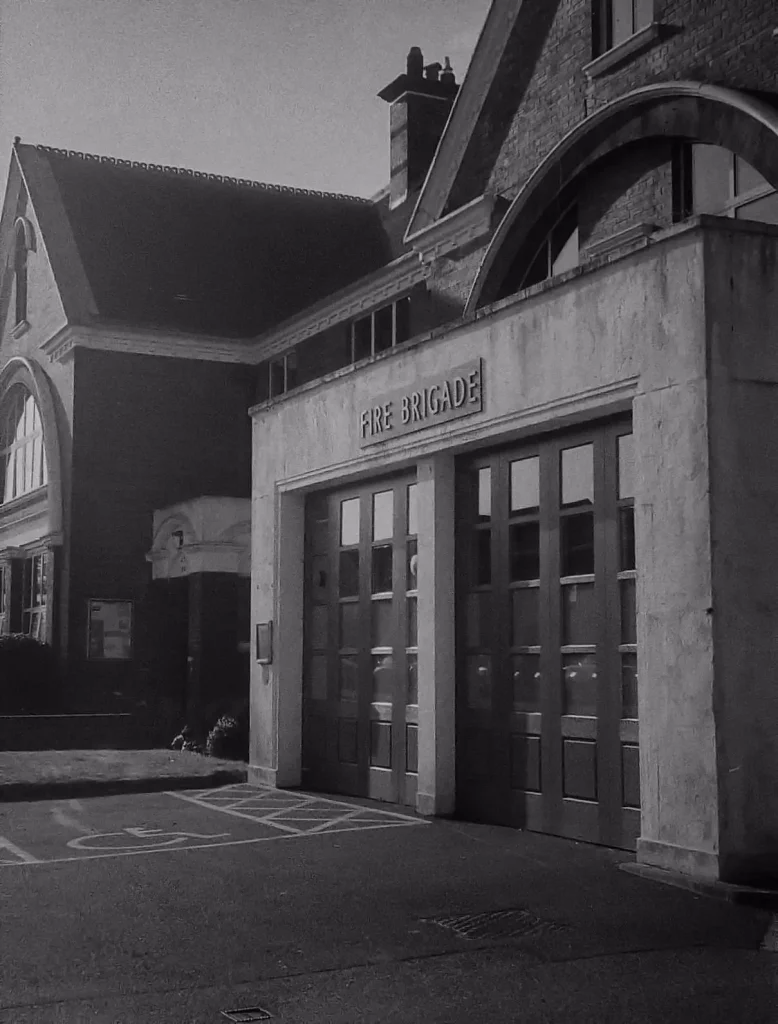
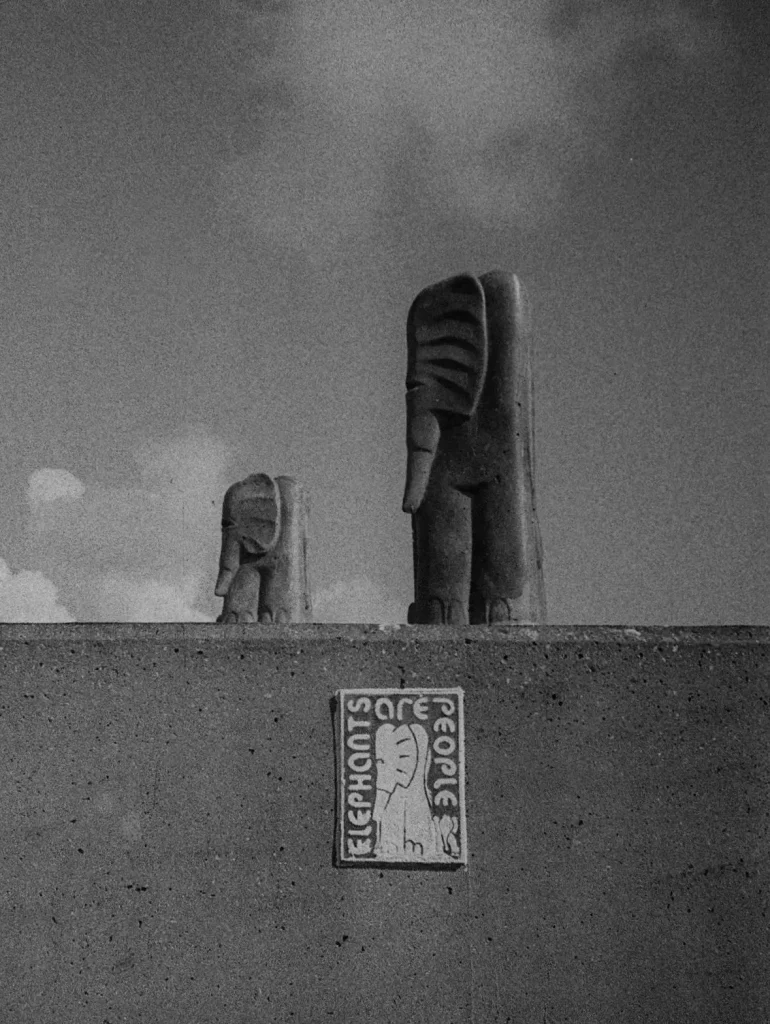
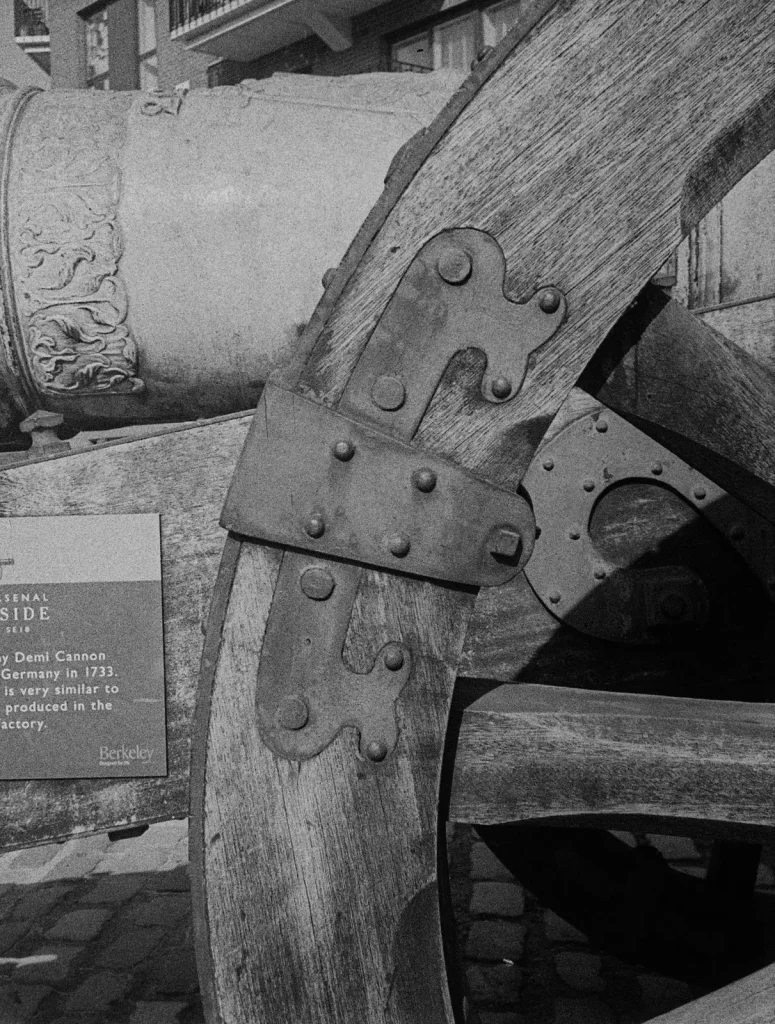
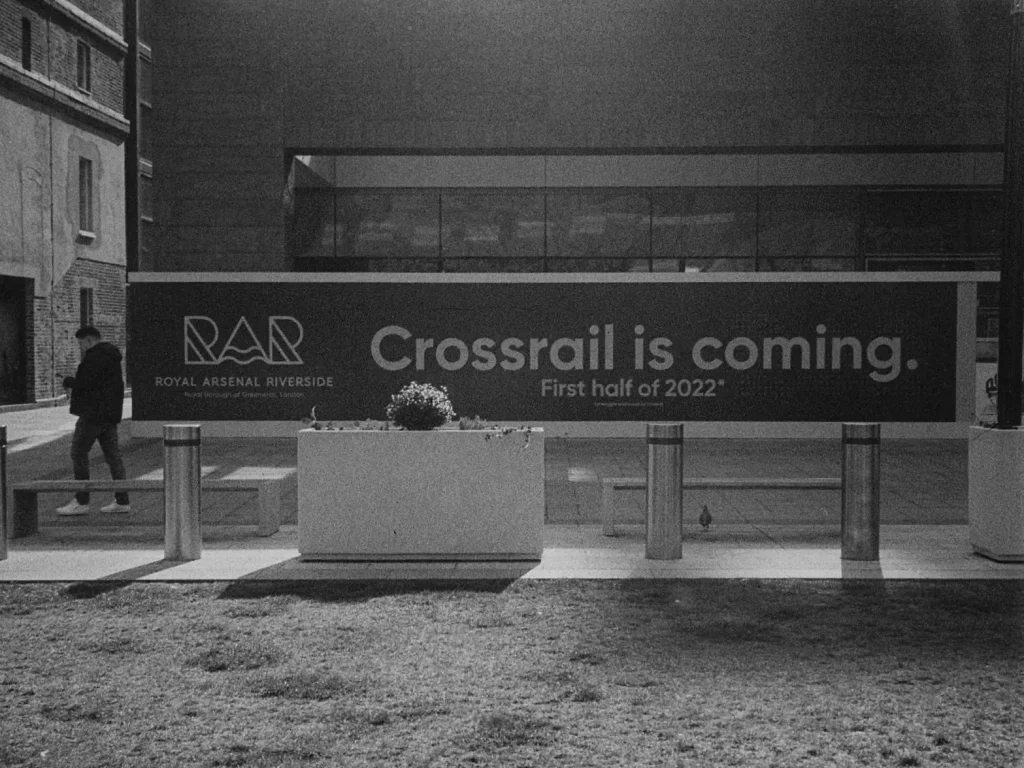
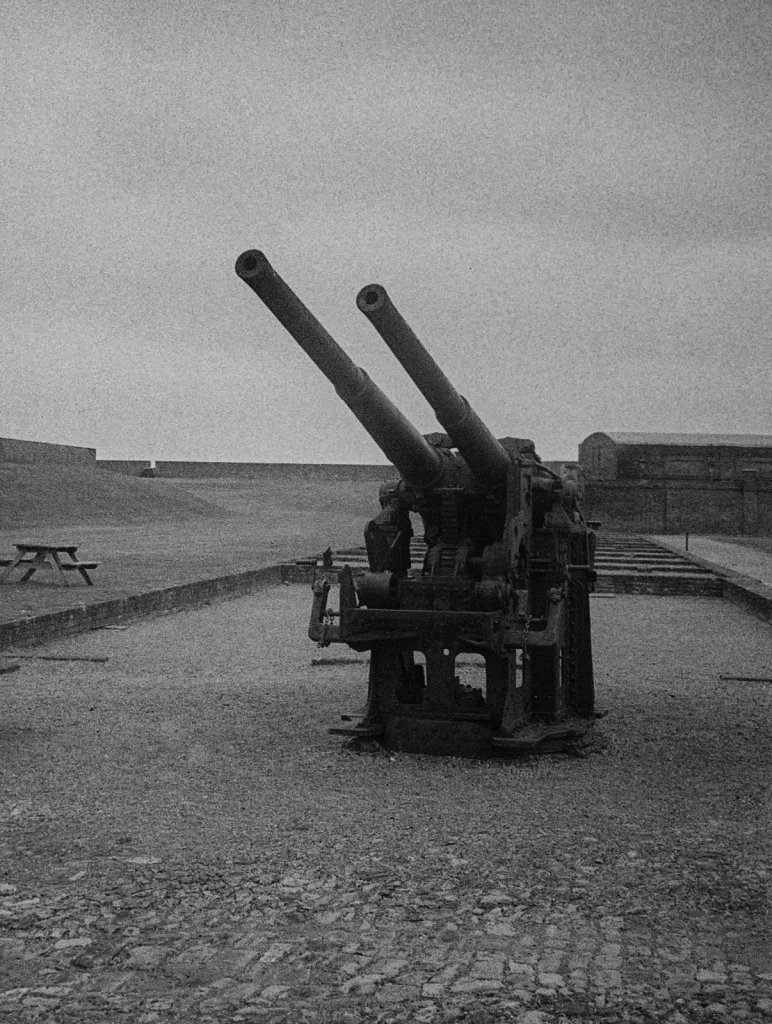
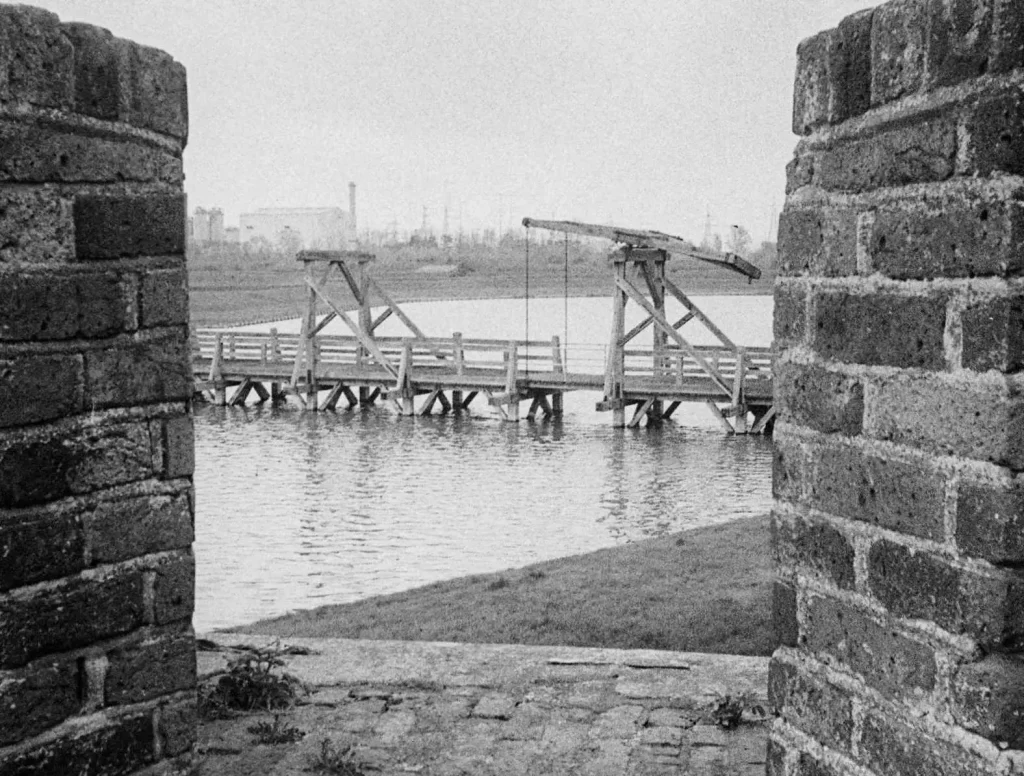
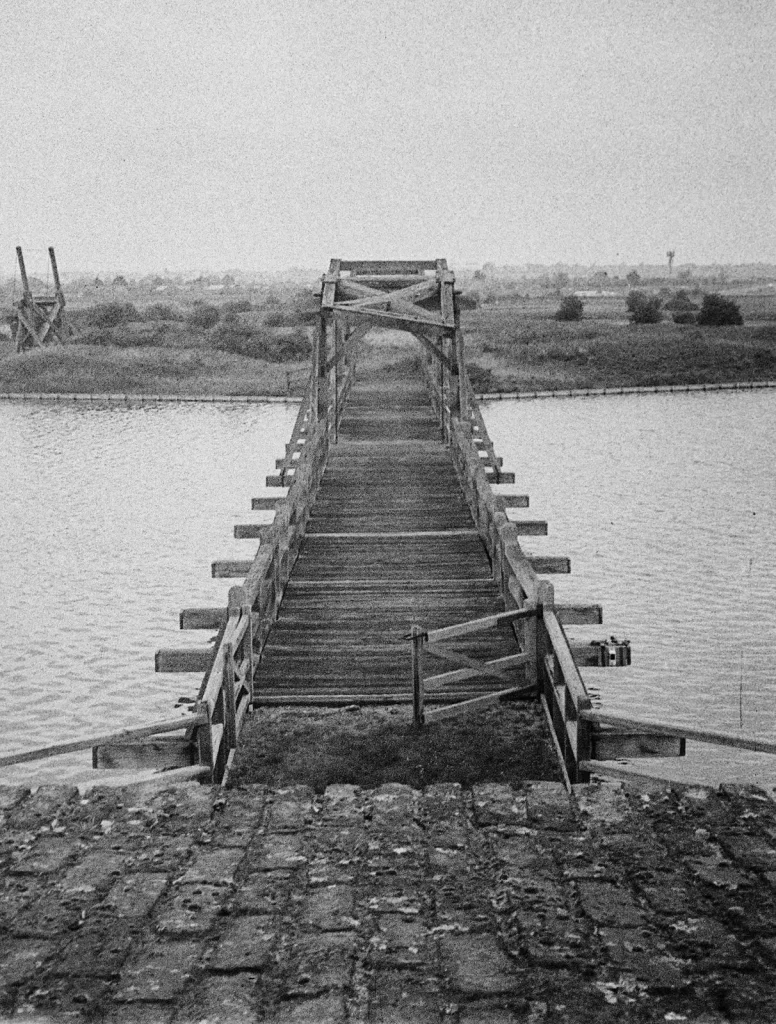
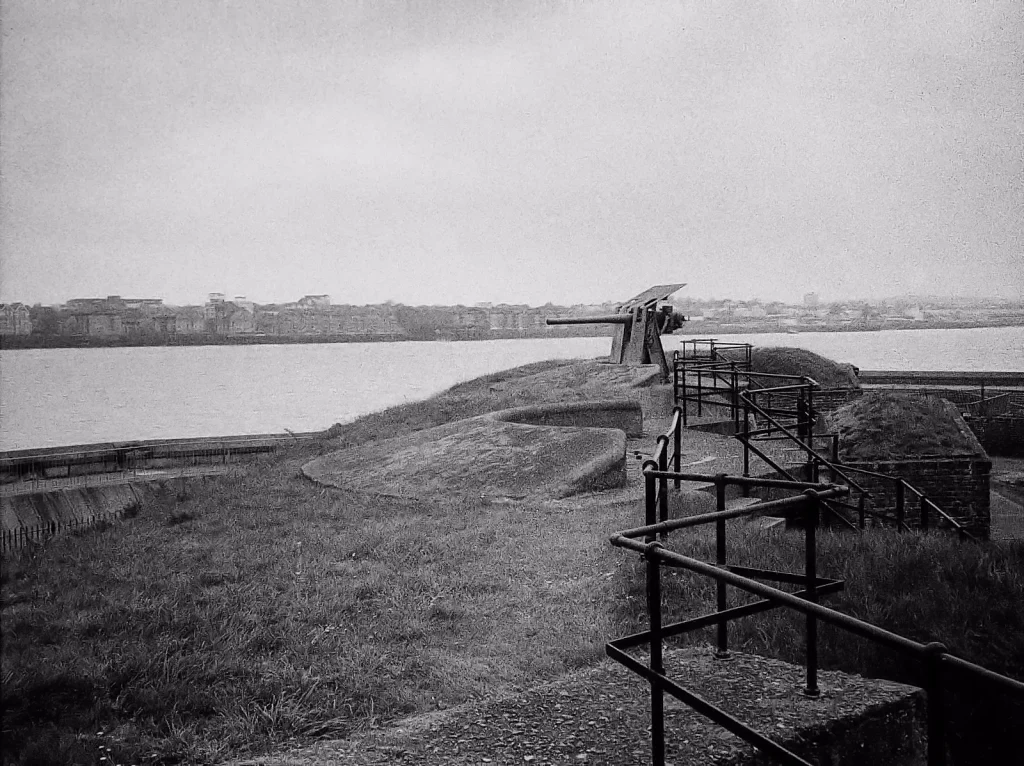
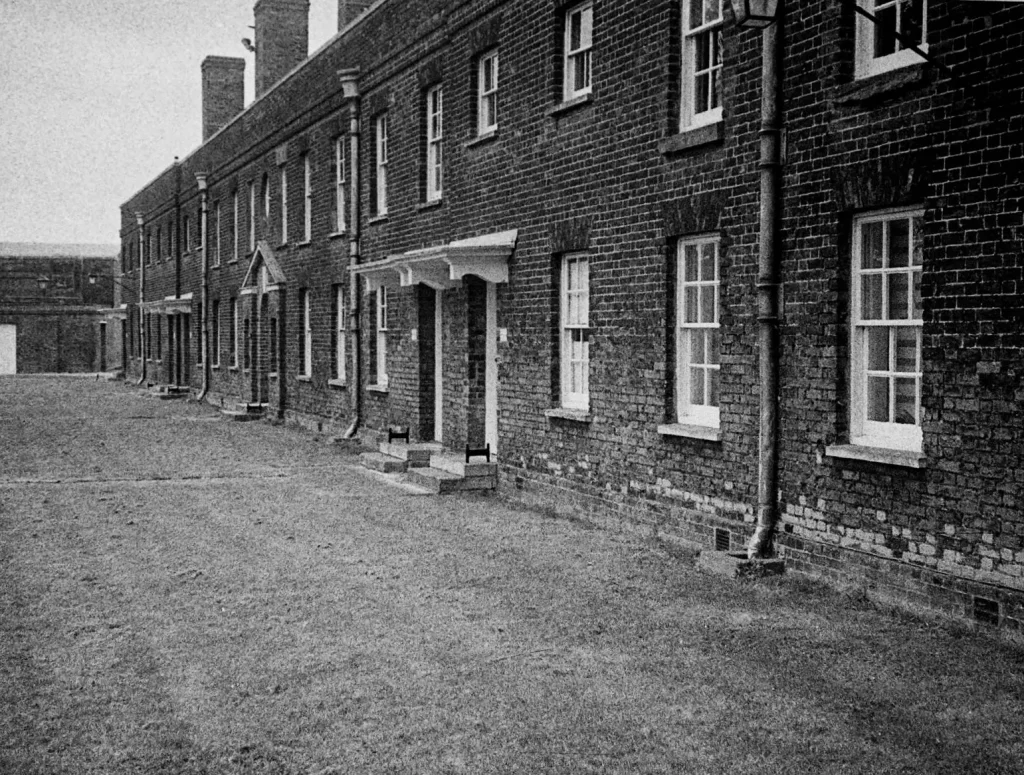
Rollei A110 – Conclusion
I find myself rather smitten. I’d been searching for a Rollei A/E110 camera since I did the Canon and Minox mini reviews. The intention was to sell the camera after I’d got enough information to write a review – however the Rollei A110 is a keeper. It is difficult to recommend a camera that uses a film type that is only produced by one supplier and which has a negative that is so small that you have to reconcile yourself the grain. However, the Rollei A110 and E110 are lovely bits of kit. If you find yourself shopping for one I’d say that either was great.
Share this post:
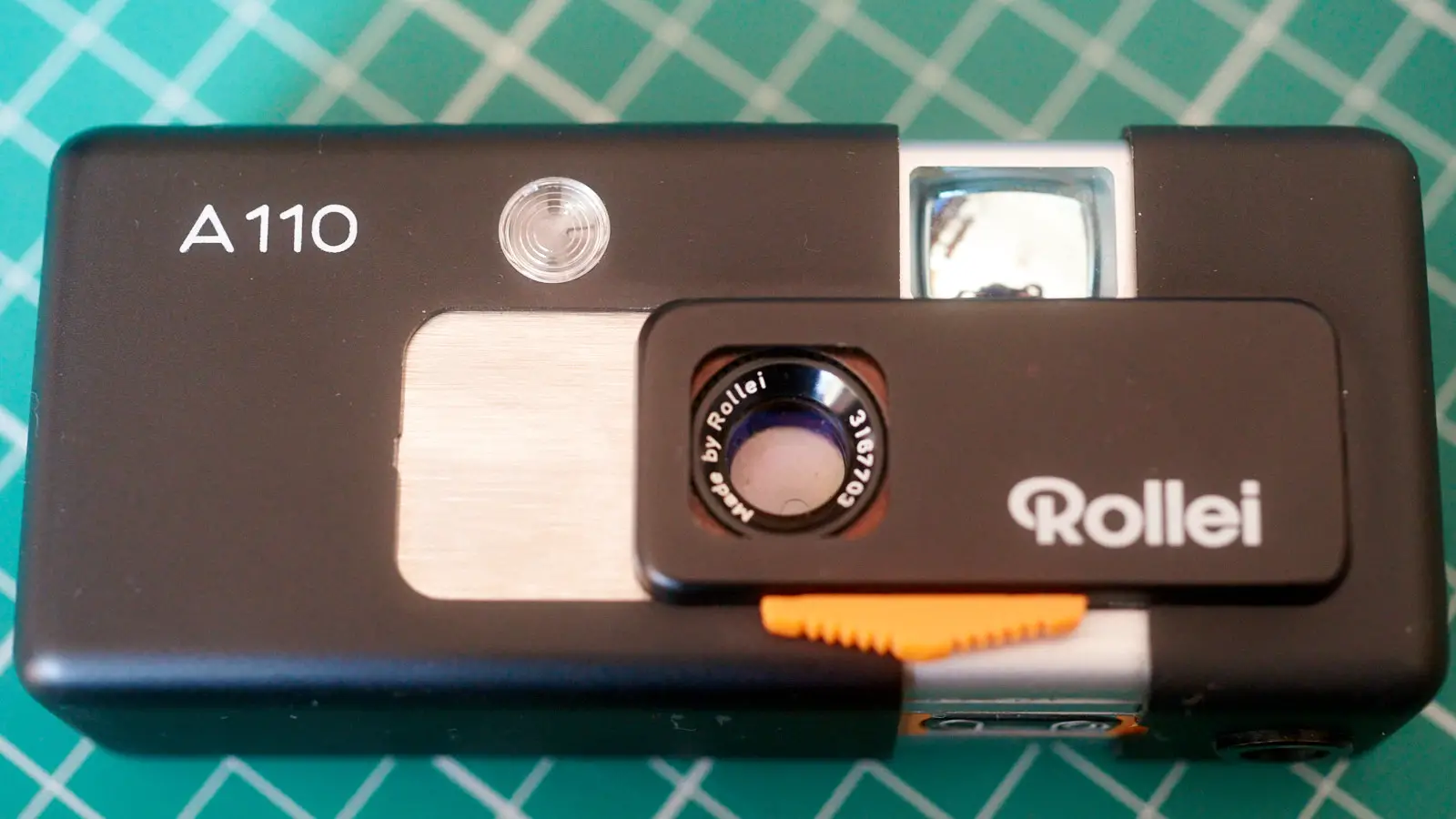








Comments
Terry B on Rollei A110 – The 110: a Review – By Bob Janes
Comment posted: 25/05/2021
With so few controls (did I say "few") slide open the body to advance the film and cock the shutter, set focus, and press. The only think to go wrong will be down to the user - forgetting to set focus or camera shake. The lens is superb, as you amply demonstrate. Just look at the sign in the image of the gun carriage wheel. Today, the limitation is always going to be the film.
Kurt Ingham on Rollei A110 – The 110: a Review – By Bob Janes
Comment posted: 25/05/2021
Ronald Schleyer on Rollei A110 – The 110: a Review – By Bob Janes
Comment posted: 27/11/2021
Acufine, the monochrome image quality of the 110 format equaled 35mm film from the best cameras, according to my experience, using a Minolta 110 Zoom SLR. Better, in fact, since Verichrome had unexcelled latitude (what we now call HDR response). The reviewer did not reveal the main thing about the Rollei A110 lens: what is the 35mm equivalent focal length? This is important for those interested in portraiture.
All About 110 Film – The Photography Professor – Film Photography How To and Help on Rollei A110 – The 110: a Review – By Bob Janes
Comment posted: 31/07/2022
Stephen Woolford on Rollei A110 – The 110: a Review – By Bob Janes
Comment posted: 19/07/2023
https://www.lomography.com/magazine/345168-lomo-quick-hacks-turn-your-instamatic-110-film-into-iso-400